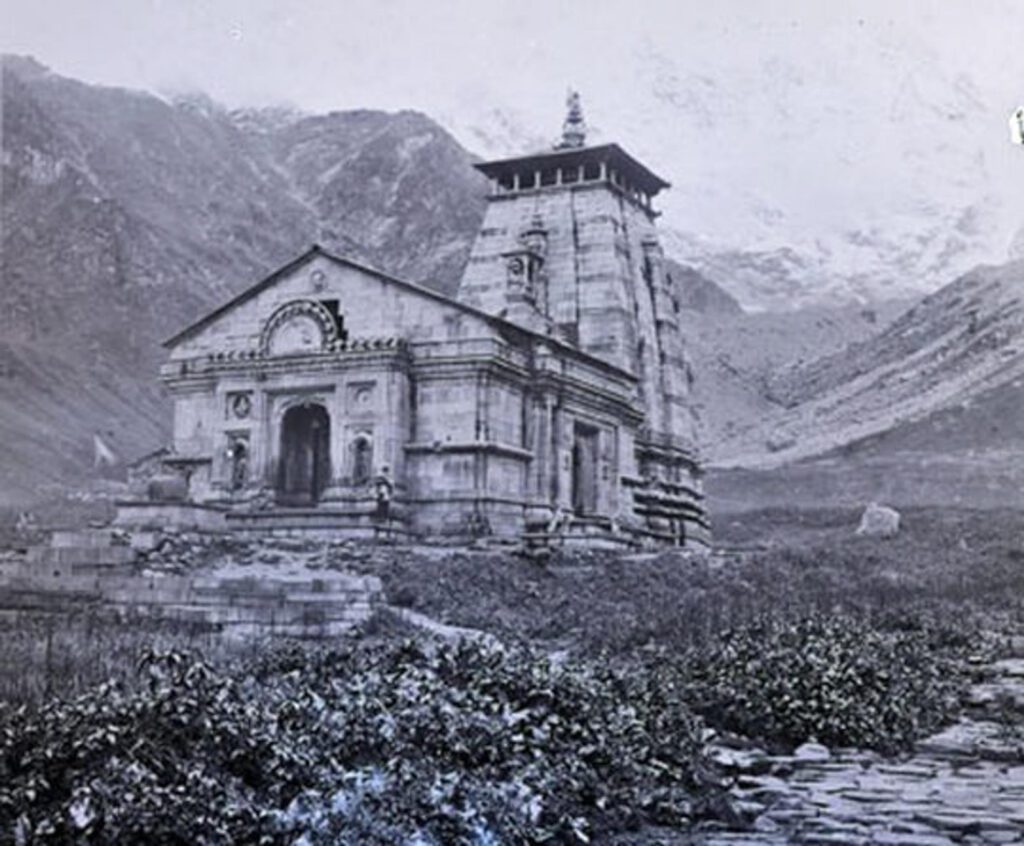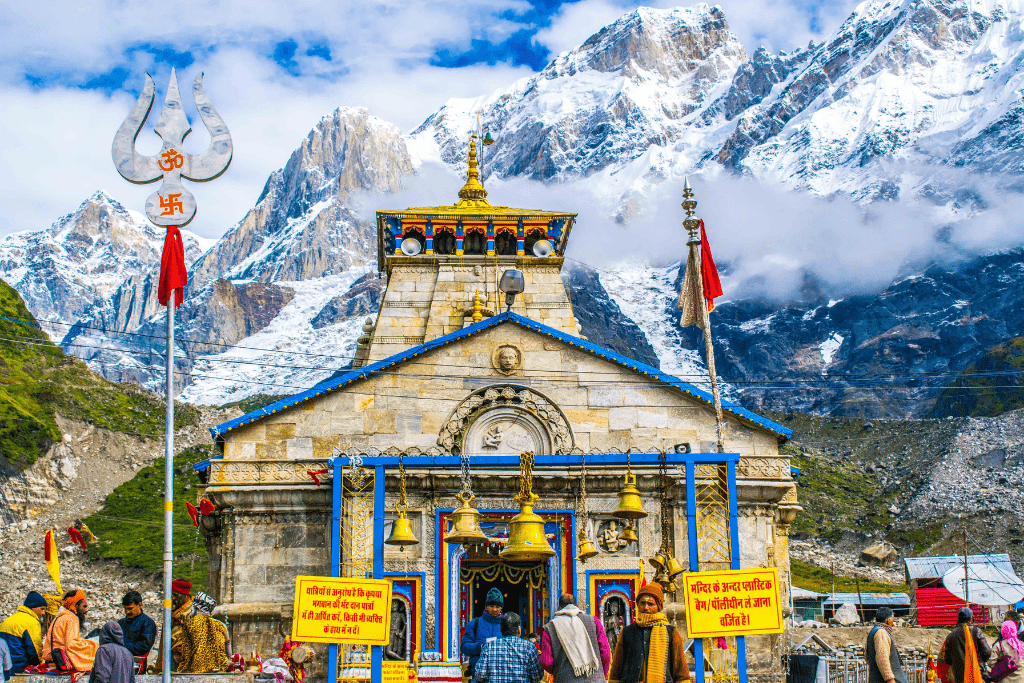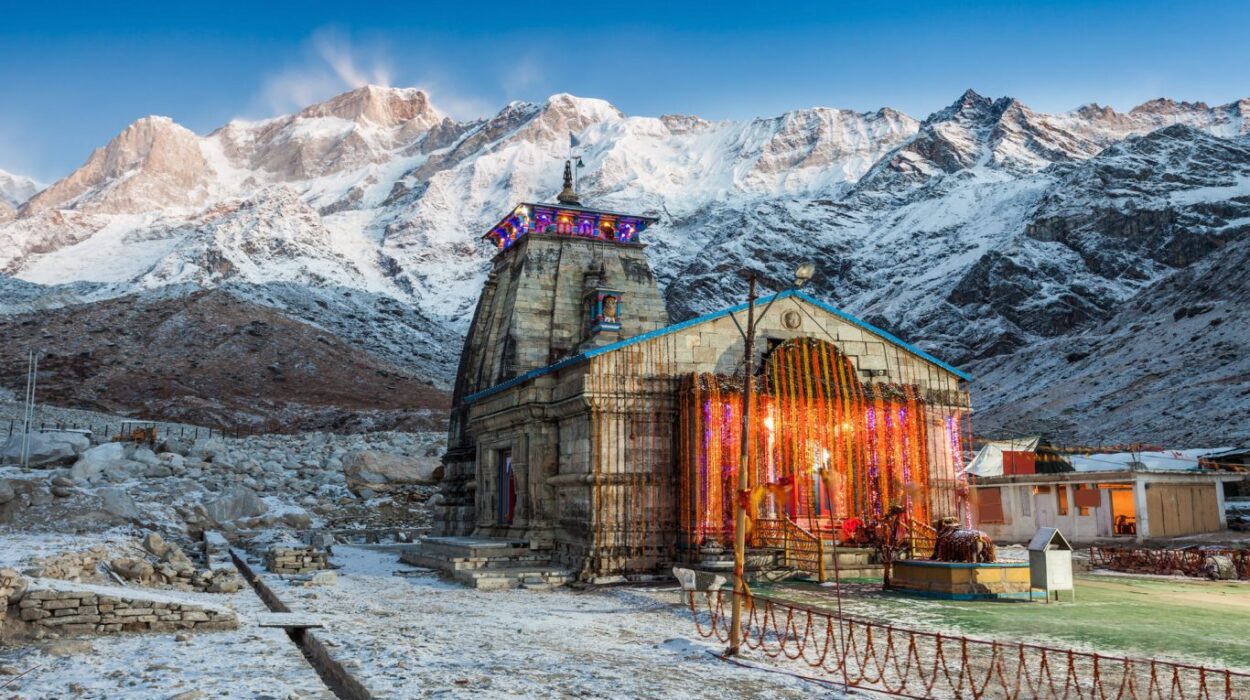The Kedarnath Temple is a symbol of Hindu devotion and perseverance, perched atop the majestic Himalayas in northern India. The temple, which is regarded as one of the nation’s holiest shrines, has been a place of worship and pilgrimage for centuries. Kedarnath has remained a significant spiritual destination for millions of Hindus from all over India and beyond despite numerous attempts to rebuild it. The Kedarnath Temple’s rich history, significance, and architecture, as well as the customs and traditions associated with pilgrimages to this holy site, will be the subject of this article. Come along with us as we explore the splendors of this magnificent temple and the spiritual legacy that it embodies.
History of Kedarnath Temple
The legends and myths surrounding the Kedarnath Temple date back to ancient times. The Pandavas, the legendary heroes of the Mahabharata, built the temple, according to Hindu mythology, to seek forgiveness for their sins during the Kurukshetra War.
The Hindu deity Shiva is also linked to the temple’s beginnings. According to legend, the Pandavas sought out Lord Shiva following the war in order to atone for their actions and obtain his blessings. Ruler Shiva, nonetheless, didn’t have any desire to pardon them effectively and appeared as a bull and vanished into the ground, abandoning his protuberance. It is believed that the hump resurfaced at Kedarnath, and the temple was constructed there.

Natural disasters and invading armies have repeatedly demolished and rebuilt the temple over the centuries. The current construction of the sanctuary is accepted to have been underlying the eighth 100 years by Adi Shankara, a Hindu scholar and scholar who is credited with laying out the four significant Hindu religious orders.
A massive flood that ravaged the area in 2013 caused extensive damage to the temple. The floodwaters cleared away numerous structures and designs nearby, including a few homes, inns, and shops. Significant damage was done to the temple complex itself, with debris all over and parts of the structure falling apart. However, in 2015, the temple was restored and reopened to pilgrims with the assistance of various organizations and the Indian government.
Millions of Hindus travel from all over India and beyond to visit the Kedarnath Temple to seek the blessings of Lord Shiva and experience the spiritual power of the Himalayas, despite the difficulties it has endured over the centuries.
Significance of Kedarnath Temple
Hindus regard the Kedarnath Temple as one of India’s holiest shrines, which is why it holds such significant religious significance for them. The sanctuary is committed to Master Shiva, one of the chief gods in the Hindu pantheon, and is loved as one of the twelve Jyotirlingas, which are accepted to be the most holy homes of Ruler Shiva.
A trip to Kedarnath is considered by Hindus to be a means of soul purification, of seeking Lord Shiva’s blessings, and of achieving moksha, or freedom from the cycle of birth and death. The sanctuary is likewise connected with the Kedarnath Yatra, a journey that takes enthusiasts on a difficult trip across the rough landscape of the Himalayas to arrive at the sanctuary.

The excursion to Kedarnath is accepted to be a trial of one’s commitment and perseverance, as explorers should get through cruel weather patterns, high heights, and troublesome territory. Pilgrims can also experience the spiritual power of the Himalayas, which are regarded as the abode of the gods, and connect with nature on this journey.
Kedarnath Temple is significant for cultural and historical reasons in addition to its religious significance. The temple complex is home to several other smaller shrines and structures that have been constructed over the centuries. The temple’s design and architecture reflect the extensive cultural heritage of ancient India.
Kedarnath Temple remains a testament to the enduring power of Hindu faith and devotion in spite of the challenges it has faced over the years, such as natural disasters and invasions. Kedarnath is a place of hope, faith, and renewal for millions of Hindus all over the world.
Architecture and Design of Kedarnath Temple
The engineering and plan of Kedarnath Sanctuary is a fine illustration of old Indian sanctuary design, mirroring the rich social legacy and creative practices of the district. The shikhara, or tower, that rises from the main sanctum is distinctive in the North Indian style of temple architecture that the temple is constructed in.
The main shrine is in the middle of the stone-built temple complex, which has a rectangular layout. The temple’s outer walls are adorned with intricate sculptures and carvings that show scenes from Hindu mythology, animals, and geometric patterns.

The Jyotirlinga is housed in the main shrine, which is a square chamber covered in copper plates and has a conical roof. The shikhara, or tower, of the temple is also made of wood and has copper plates covering it, giving it a distinctive golden glow in the sun. A golden amalaka, a decorative stone typically found on the top of Hindu temples, graces the shikhara’s top.
The temple’s dimly lit interior exudes a serene, meditative atmosphere. Ancient frescoes and carvings, including scenes from Hindu mythology and gods and goddesses, adorn the walls.
The Bhairav Temple, which is dedicated to Lord Shiva’s fierce aspect Bhairava, is one of several smaller shrines and structures in the temple complex in addition to the main shrine. In addition, there are numerous shops and stalls selling religious items as well as a large courtyard where devotees can gather to perform rituals.
In general, the architecture and design of the Kedarnath Temple are a testament to the artistic and spiritual traditions of ancient India. Millions of pilgrims visit the temple every year, and it continues to be a source of inspiration and awe for them.
The Kedarnath Yatra
The Kedarnath Yatra is a pilgrimage that takes devotees on a difficult trek to the Kedarnath Temple through the rugged Himalayan terrain. The excursion is accepted to be a trial of one’s commitment and perseverance and is a significant piece of the journey insight for some Hindus.
The town of Rishikesh, which is at the foot of the Himalayas, is typically where the Yatra usually begins. Pilgrims then make their way to Guptkashi, the town where the trek to Kedarnath begins. The trek lasts approximately two days and covers approximately 16 kilometers.
The pilgrims must negotiate steep inclines, rocky terrain, and harsh weather, including extreme cold and high-altitude sickness, to complete the journey, which is physically taxing. However, pilgrims can also connect with nature and experience the spiritual power of the Himalayas through the Yatra.

Pilgrims can rest and restock their supplies in a number of small towns and villages along the way. There are likewise a few little sanctuaries and holy places in transit, where pioneers can offer supplications and look for gifts from the nearby divinities.
Pilgrims are greeted by the majestic temple surrounded by glaciers and snow-capped peaks when they arrive at Kedarnath. The Mandakini River is on three sides of the temple complex, which is at an elevation of more than 11,000 feet.
Pilgrims typically follow the same route they took to Kedarnath when they return to Rishikesh after carrying out the necessary rituals and praying at the temple. It is regarded as one of India’s most challenging and rewarding pilgrimages and takes about 5 to 6 days to complete.
Best Time to Visit
The months of May through June and September through October are the best times to visit Kedarnath Temple. The region rarely experiences heavy precipitation or snowfall during these months, which also tend to have relatively mild temperatures.
Kedarnath Temple is best visited in the summer months of May and June because the weather is pleasant and the snow has melted, making it easier to get to the temple. It is best to avoid the monsoon season, which typically begins in July and lasts until August. This time of year brings heavy rainfall, landslides, and flash floods, making it hard to get to the temple.
Kedarnath is also a great place to visit during the autumn months of September and October due to the mild weather and the vibrant fall colors in the area. It is often very cold in the winter, from November to April, and there is a lot of snow, making it hard to get to the temple.
It is important to note that the Kedarnath Yatra typically begins in May and ends in October; the exact dates are determined by the weather and the trekking route’s safety. Before embarking on the pilgrimage, it is best to plan your trip accordingly and consult the authorities in the area.
How to Reach the Temple
The Kedarnath Temple is in the Himalayan mountain range in the Indian state of Uttarakhand. While the sanctuary is situated in a distant region and isn’t effectively open by street or air, there are multiple ways of arriving at it:
By Trek: Trekking from Gaurikund, a town about 16 kilometers from the Kedarnath Temple, is the most common way to get there. The trek is said to be challenging but rewarding and takes about two days to complete.
By Helicopter: Helicopter services are available from several cities in Uttarakhand, including Dehradun and Phata, for those who prefer a more comfortable mode of transportation. The helicopter ride, which takes about 10 to 15 minutes, offers a beautiful view of the Himalayas from above.
By Road: Kedarnath Temple cannot be reached by road, but one can drive to Gaurikund and then trek there. From the major cities in Uttarakhand, such as Rishikesh and Haridwar, you can also get to Gaurikund by bus or taxi.
By Train: Rishikesh, about 220 kilometers away, is the railway station closest to Kedarnath Temple. You can then trek to the temple by bus or taxi from there to Gaurikund.
It’s vital to take note of that during the storm season, the traveling course to Kedarnath Sanctuary can be perilous because of avalanches and glimmer floods. Before setting out on the journey, it is best to schedule your visit during the recommended months and consult the authorities in the area.
Conclusion
One of India’s most revered pilgrimage destinations, Kedarnath Temple is evidence of the country’s extensive cultural and religious heritage. Visitors from all over the world find the temple’s history, architecture, and natural surroundings fascinating.
While many pilgrims find the journey to Kedarnath Temple to be deeply spiritual and rewarding, it can be physically taxing. The journey to Kedarnath Temple is an adventure that is sure to make an impression. You can do it by foot, by helicopter, by train, or by road.
It is essential to consider the ideal time to visit Kedarnath Temple and to take the necessary safety measures if you intend to do so. Kedarnath Temple is a must-visit destination for anyone interested in exploring India’s spiritual and natural wonders because of its stunning natural beauty and rich cultural heritage.
FAQs
Is Kedarnath Temple open throughout the year?
No, the Kedarnath Temple is only open from May to October each year. Due to heavy snowfall during the winter, the temple is closed, and the trekking route is unsafe.
Can children and senior citizens undertake the Kedarnath Yatra?
The Kedarnath Yatra is a physically demanding journey that may not be suitable for children or senior citizens due to the high altitude trekking involved. They can, however, participate in the yatra with adequate preparation and medical clearance.
Is there a place to stay near Kedarnath Temple?
Yes, there are a number of places to stay near Kedarnath Temple, from cheap guesthouses to expensive hotels. However, due to limited supply during the peak season, it is essential to reserve your lodging in advance.
Is it possible to take pictures inside the temple?
No, photography and videography are completely denied inside the sanctuary premises, as being a sacred site is thought of.
What is the dress code for visiting Kedarnath Temple?
Kedarnath Temple visitors should dress conservatively and wear warm, comfortable clothing because temperatures can drop significantly at high altitudes. There is no strict dress code. Additionally, it is recommended that you travel in sturdy trekking boots or shoes.







